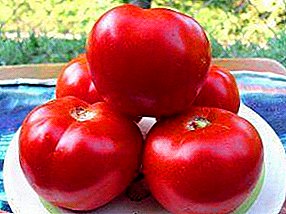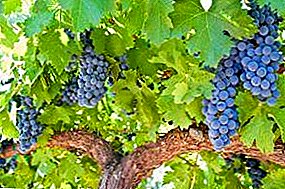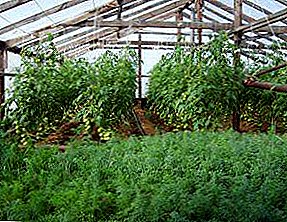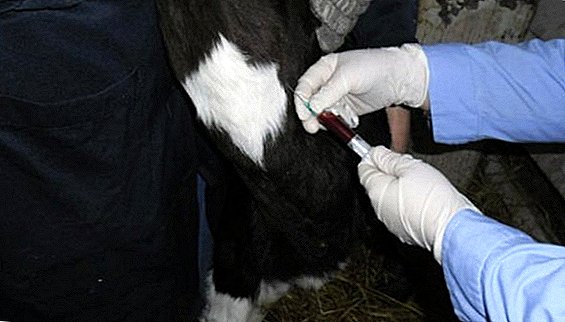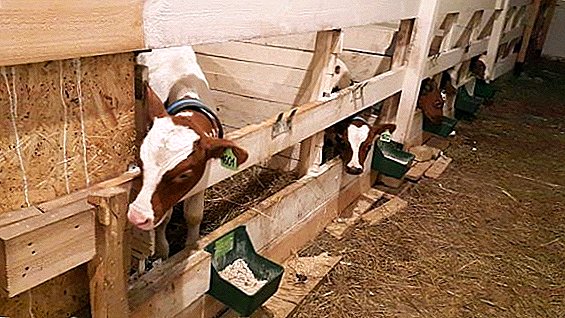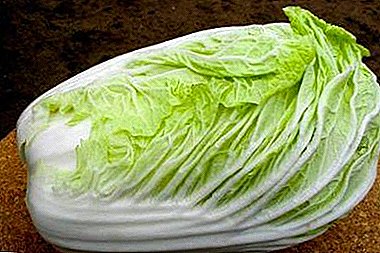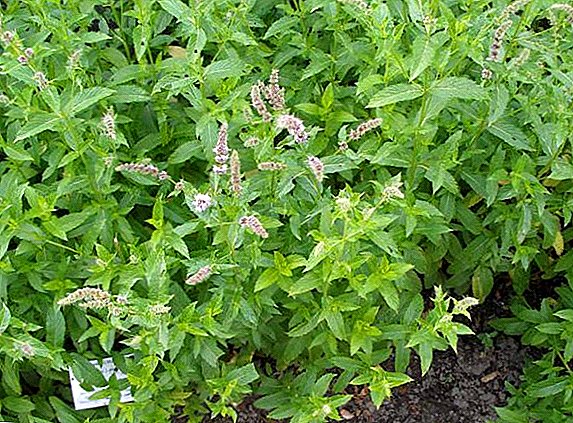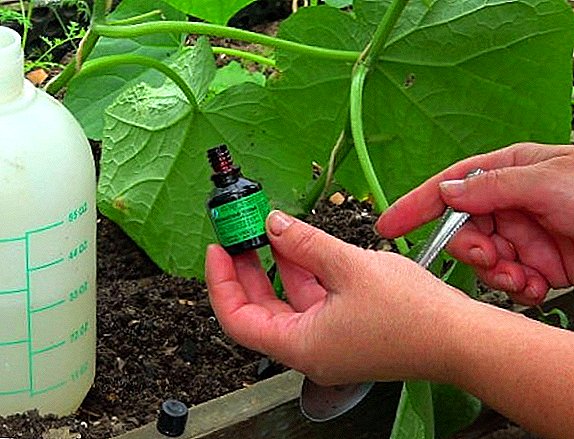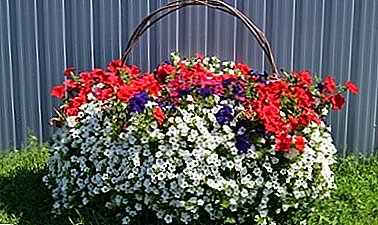 Choosing a cow, livestock breeders often prefer the Dutch breed, and for good reason. These animals can boast primacy among other species at once by several criteria: productivity, age of the breed and distribution. Thus, the Dutch cows are the most popular dairy breed today, they are always preferred for high milk yield, and the gene of this breed is present in almost all modern dairy breeds.
Choosing a cow, livestock breeders often prefer the Dutch breed, and for good reason. These animals can boast primacy among other species at once by several criteria: productivity, age of the breed and distribution. Thus, the Dutch cows are the most popular dairy breed today, they are always preferred for high milk yield, and the gene of this breed is present in almost all modern dairy breeds.
History of origin
The first mention of the breed appeared in the XVII century in the Netherlands (most likely in the provinces of southern and northern Holland), which is why it got its name.  For centuries, the exterior of the breed has changed due to breeding, and if in the past it was animals with a soft constitution, weak bones and muscles, then today the Dutch cows have a strong and massive physique.
For centuries, the exterior of the breed has changed due to breeding, and if in the past it was animals with a soft constitution, weak bones and muscles, then today the Dutch cows have a strong and massive physique.
Thanks to the excellent genetics, the Burenok transmitted their best dairy characteristics from generation to generation. It is believed that they were used to breed most of the dairy breeds, so now almost all dairy cows can find the Dutch gene.
Did you know? Before the advent of customary money, it was cows of many nations that acted as "currency". The number of cows determined the wealth and nobility of a person, the value of the bride and all material wealth.
Breed characteristic
Dutch women are not only distinguished by high productive indices, but also look good.
Appearance and physique
Animals of this breed have a recognizable appearance:
- head: medium size, dry, oblong;
- neck: short, turning into a straight back;
- chest: pronounced, deep and wide:
- case: harmoniously built, strong and massive;
- muscles: well developed;
- backbone: strong;
- limbs: short, straight;
- wool: short and elastic;
- suit: black and white, motley (spotty);
- height at withers: up to 130-135 cm;
- udder: large, cup-shaped, with the correct location of the nipples and a clearly visible network of vessels.

Productive qualities
The main productive qualities of the breed are measured in milk yield and milk quality, as well as meat output and puberty:
- yield: 4000-5000 l / year;
- fat content: from 4%;
- protein content: 3,3-3,5%;
- precocity: insemination of females can be carried out from 14-18 months;
- bull weight: 850-900 kg;
- cow weight: 540-560 kg;
- calf weight at birth: 40 kg;
- weight gain: stable and fast; at 6 months, the baby can weigh 170 kg;
- meat slaughter: 51-53%, with special fattening up to 60%;
- meat quality: high.
Did you know? The Dutch Sneaker is considered to be the cow-record holder for milk yields - after the eighth calf, her productivity increased to 11,208 liters of milk per year, while his fat content did not fall below 4.1%!
Advantages and disadvantages
Breed Benefits:
- Precocity.
- High milk production, which other dairy species cannot boast.
- High yield of high quality meat products.
- High adaptability to different climatic conditions.
 However, to evaluate all the advantages of this breed can only be subject to the rules of maintenance and care, which need Dutch. With errors in nutrition, systematic stresses and abnormal conditions, a significant decrease in milk yields can be observed.
However, to evaluate all the advantages of this breed can only be subject to the rules of maintenance and care, which need Dutch. With errors in nutrition, systematic stresses and abnormal conditions, a significant decrease in milk yields can be observed.Due to the high demands on the conditions, this breed cannot be called ideal, and all the more so light that an aspiring livestock breeder can cope with it.
Dutch disadvantages:
- Susceptibility to serious illnesses (tuberculosis, leukemia).
- Demanding conditions and care.
- A negative reaction to stress and fright, which always leads to a decrease in milk production.
- Cleanliness (the need for constant attention to litter, the need for cleaning and washing the animal itself)
The dairy breeds of cows include such as brown Latvian, red steppe, Holstein, Jersey, Ayrshire, Yaroslavl.
Maintenance and care
As mentioned earlier, the Dutch are extremely demanding in conditions of detention and care. However, no emergency conditions are required.
Summer playground
It is known that cows tolerate low temperatures well, but the heat affects them very adversely. When the temperature rises to 25 ° C, the yield drops sharply.  Therefore, for the summer period, the Dutchwoman must necessarily equip a kind of “letnik” with a roof made of flooring or tiles, where the sun’s rays will not fall, so that the animal can rest easy.
Therefore, for the summer period, the Dutchwoman must necessarily equip a kind of “letnik” with a roof made of flooring or tiles, where the sun’s rays will not fall, so that the animal can rest easy.
Important! On the summer area must be drinking bowls with fresh water!
If there are trees and bushes on the territory of the summer playground, it will also help to transfer the heat much easier.
The area of the paddock for walking and grazing should be sufficient so that the cow could move and walk freely. Be sure to take care of the fence.
Arrangement of the barn
The size of a standard barn is most often 6x4 m, where about half of the space is placed on the cow, part on the stall for the calf, and the rest of the place is for storing the food and placing the inventory. The height of the room should be approximately 2.5 m. The room should have good thermal insulation.
Special attention should be paid to the floor - it should be warm, waterproof and easy to clean. The wooden floor is comfortable and warm, but after 4 years it becomes unusable, so the floors are often made of concrete or brick.  A bedding layer of up to 20 cm is used as a bedding material for the barn. You can use a mix of straw and peat in a 2: 1 ratio - this option is more successful and hygienic, because peat will absorb gases and urine. The litter should always be dry, otherwise the animal will refuse to lie down, which will reduce milk yield and milk quality.
A bedding layer of up to 20 cm is used as a bedding material for the barn. You can use a mix of straw and peat in a 2: 1 ratio - this option is more successful and hygienic, because peat will absorb gases and urine. The litter should always be dry, otherwise the animal will refuse to lie down, which will reduce milk yield and milk quality.
Important! If the floor is concrete or brick, you must cover it with litter!The main place in the barn is a stall. Its area for an adult individual is about 2.5 square meters. The trough should be approximately 100x80 cm in size near the stall. The bottom of the trough should be slightly tapered, and the design itself should resemble an inverted trapezium - this shape makes cleaning a vessel much easier.
Feeders can be made of wood, steel, cast iron. The main thing is that the material is environmentally friendly.
Also in the barn must be drinking bowls. Since the Dutch are dairy cows with very high productivity, they have an extremely high need for water. For the production of 1 liter of milk, the cow spends on average 4 liters of water - accordingly, an animal may need up to 50-80 liters per day and even more.  Therefore, the drinker should be roomy, approximately 100-150 liters.
Therefore, the drinker should be roomy, approximately 100-150 liters.
The material of drinkers can be diverse, but it must meet the following criteria: strength and non-toxicity. In addition, the shape of the drinker should be safe for the cow, without sharp edges and corners. Usually they are made of durable food plastic, galvanized, cast iron, wood.
Conditions of detention
Optimal conditions for the Dutch in the barn:
- Temperature. This breed has high adaptive abilities, so the cows tolerate both low and high temperatures. However, in the barn it is necessary to maintain the temperature at a level not lower than 10 ° C. It is known that cows feel better and show higher productivity at cool temperatures, so raising the thermometer mark above 25-30 ° C is highly undesirable. In winter, the room can not be heated, since the animal itself produces a fairly large amount of heat. The main thing is that the barn has good thermal insulation.
- Lighting. This is an extremely important factor affecting the health, well-being and productivity of the animal. It is proved that by adjusting the lighting to optimal performance, you can increase the yield by 6-10%! In the barn you need to organize such a lighting system: 16/8, where 16 hours is a light day, and 8 is a full night. It is especially important to adhere to such a regime in the winter and during the transitional seasons; in summer, artificial lighting will not play such an important role. Beginning and end of coverage should fall at 4:30 am and 8:30 pm. The intensity should be 150-300 Lx, while the light should be brighter near the feeder and drinker than in the stall for rest. At night, the barn can be illuminated with a red lamp with an intensity of 10 Lx, since the total darkness in the room is contraindicated.
- Humidity. Should be in the range of 50-85%.
- Ventilation. At least the simplest ventilation system must be present in the barn, otherwise it will be necessary to regularly conduct ventilation. Indoors should not collect stagnant air, as well as dust, carbon dioxide, ammonia. All these factors, as well as excessive humidity, repeatedly increase the risk of developing infections and adversely affect the milk yield. When establishing a ventilation system, it is necessary to take into account a number of factors: the size of the barn and the height of the ceilings, the particular climate in the region, and the wind flow in your area. For a small barn, natural ventilation is often chosen when used air is discharged through the ceiling and fresh air is supplied through the wall openings (protected by filters).
- Drafts. Definitely, there should be no drafts in the barn. Particularly dangerous for calf drafts. To avoid drafts in the case of natural ventilation, it is necessary to correctly and accurately study the direction of the wind on the ground. It also helps reduce room ventilation and reverse traction.

Regular cleaning of the stall and inventory
In the barn, you must always maintain cleanliness, which necessarily implies a purging of feces. At large enterprises for breeding cows, manure removal is usually automated, but in a small farm for 1-2 individuals such waste is not at all reasonable.
Important! Dutch women need to be kept exclusively in a loose way, as these animals are freedom-loving - on a leash, they experience severe stress, which is extremely bad for productivity.
Therefore, the removal of feces is usually organized in such a way: to drain the liquid, construct a ditch at an angle to the exit. It can be clogged with straw, so it needs to be cleaned as it is contaminated, but at least once a day.
Remove manure before each milking (if there is such a need). For this you can use the tools at hand: forks, shovels, shovels, brooms.
Bedding should be changed once a month. If urine and manure do not reach it at all, full replacement can be carried out less frequently. In this case, the litter thickness will increase, providing the animal with more heat in winter.  Regarding washing feeders and drinkers - it is very important to clean them mechanically from adhering dirt and food debris. Drinking bowls should be thoroughly sponge-washed with each water change, that is, daily.
Regarding washing feeders and drinkers - it is very important to clean them mechanically from adhering dirt and food debris. Drinking bowls should be thoroughly sponge-washed with each water change, that is, daily.
For disinfection of the barn and inventory, you can use these modern disinfectants:
- Virucide, 0.5% solution;
- Bromosept;
- Ecocide C.
What to feed
By thinking through the diet and feeding regime of Dutch Dutch breeds should also be approached with great responsibility. After all, the quality of food and balanced diet directly affect milk yield.
Important! When changing food, switching from one species to another, or when switching from summer to winter diet, a decrease in productivity is possible until the animal becomes accustomed to new conditions. This is normal.
Summer grazing on pasture
In summer, the main food for all ruminants is green fodder. They make up almost 80% of the diet, but do not fully cover the body's need for essential nutrients. Therefore, green food should be supplemented with juicy: potatoes, beet (these products should be given separately to avoid bloating).  Grain mixtures and combined feed or completely excluded from the diet, or their number is minimized.
Grain mixtures and combined feed or completely excluded from the diet, or their number is minimized.
Advantages of green fodder:
- these feeds are well digested and absorbed in animals;
- have a high dietary value;
- replenish the level of vitamins, amino acids, minerals.
It is very important that in the spring and summer time the animal has the opportunity to eat fresh young grass, because with time the plants deteriorate not only the taste, but also the nutritional value. For feeding, you can use meadow grasses or herbs specially grown to feed livestock.
Important! The transition from a summer ration to a winter one and vice versa should take place gradually, otherwise digestive disorders, aggravation of inflammatory processes, and a large decrease in milk yields may occur.
These include:
- alfalfa
- clover,
- grass peas and beans.
Per day, one adult eats up to 70 kg of green fodder. 
Winter feeding
The basis of the diet in winter are the following categories of products:
- Hay (from 50 to 80%). It is a source of vitamins, minerals, fiber, protein.
- Haylage and silage (20%). This group of feed is a source of vitamins, fiber and protein. For nutritional and dietary value, haylage and silage are equated to green fodder.
- Root vegetables and other vegetables (10-15%). These products are strong stimulants of milk production, therefore it is imperative to include them in the diet. Usually, the cows eat very well such crops: carrots, sugar and table beets, potatoes, zucchini, pumpkin, watermelons.
- Grain mixtures, feed and concentrates (30%). This group includes not only cereals (oats, wheat, legumes), but also cake, meal, bran and bread crumbs.
Find out also what should be the diet of the calf, dairy cows, pregnant dry cows, the sire of a bull.
Feeding should take place strictly at the same time three times a day. The Dutch cows react extremely negatively to change the regime or ignore it - however, like any other breed cows.
Water and salt
Do not underestimate the role of water in the level of productivity of dairy cattle. As we have already mentioned, it takes 4-6 liters of water to produce 1 liter of milk, so the lack of liquid affects milk yield immediately, on the same day, sometimes resulting in only 20% of the normal daily milk requirement.  So the calculation of water should be given the same attention as the preparation of the diet.
So the calculation of water should be given the same attention as the preparation of the diet.
The amount of water consumed will be influenced by climatic and weather conditions, as well as features of the feed, because they can contain from 3 to 90% of the liquid. One adult per day may require about 60-100 liters of water, depending on the attendant factors. Water should be summer temperature.
It is also worth taking care that your cow receives sufficient amounts of minerals in the form of salt.
It is necessary for the animal for the following reasons:
- synthesizes hydrochloric acid in the stomach;
- normalizes the work of the central nervous system, is responsible for healthy bones and muscles;
- the level of salt depends on the fat content of milk;
- provides metabolic processes in the body;
- is a natural antibiotic.
The amount of salt needs to be strictly regulated, as a shortage or surplus can be dangerous. To calculate the norm, you can use the following formula: 5 g of salt per 100 kg of weight + 4 g for each finished liter.
For example, a cow weighs 550 kg, an average of 12 liters of milk per day. Daily amount of salt in the diet: (5 * 5.5) + (4 * 12) = 75.5 g  To avoid inaccuracies in the calculation, the possible excess or deficiency, you can use special salt lickers. Thus, the animal will independently regulate the amount of supplement consumed.
To avoid inaccuracies in the calculation, the possible excess or deficiency, you can use special salt lickers. Thus, the animal will independently regulate the amount of supplement consumed.
Did you know? Cows feel the time and mode of the day perfectly, preferring to strictly adhere to it, so a milking delay of even half an hour can lead to a decrease in milk yield by 5%.
Summing up: the Dutch breed of cows is highly productive, but at the same time rather demanding to conditions and feeding. Most often it is not chosen for solitary confinement on the plot.
Dutch women are bought for large livestock farms and farms, since on such a scale it is easier for animals to provide the necessary conditions. But if you have a great and successful experience in keeping dairy varieties, you can try to keep this breed in your yard.


